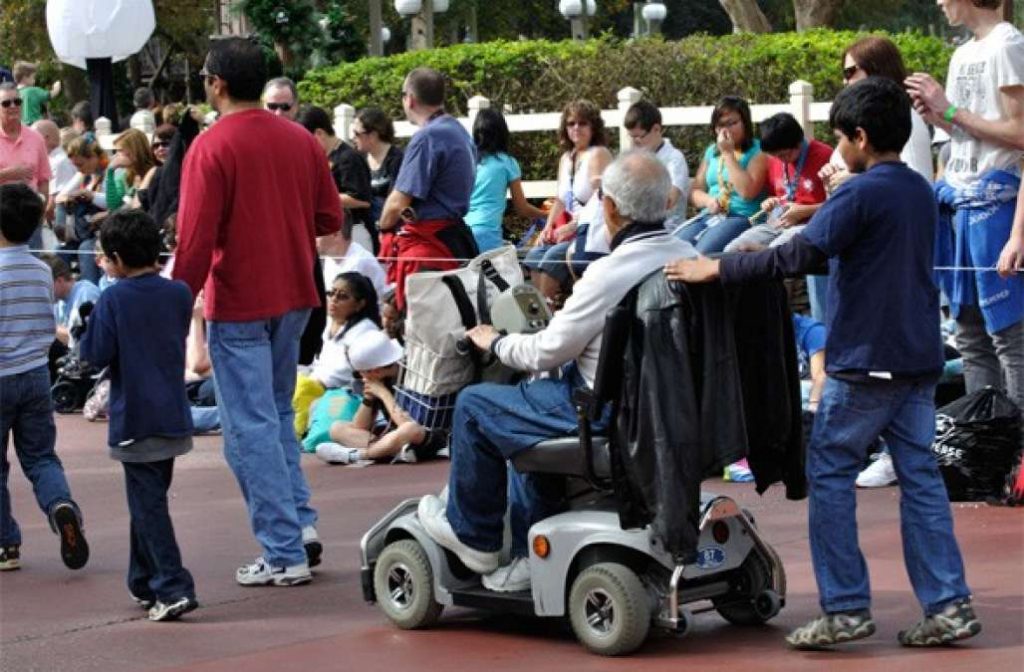The quality of provision for people with a disability varies enormously between hotels, restaurants and sights in London. But many of the city’s top attractions and entertainment venues can be enjoyed with a limited amount of additional planning. The transport network is continually improving in regards to accessibility and there are a number of ways to ensure that getting around is as simple as possible.
Accessible transport
The London transport network is not 100% accessible, but with forward planning visitors with mobility problems should be able to get around most destinations without too much difficulty. Plan your trip on the Transport for London (tfl.gov.uk) site, which has an online journey planner that allows you to filter your search according to accessibility requirements, as well as informative videos about particular modes of transport. Assistance and advice is also available on the 24-hour helpline (0343 222 1234), or use Textphone on 0800 112 3456.
You can travel with assistance dogs across the entire London transport network. And it’s also worth checking whether it may be quicker to get between points under your own steam rather than using public transport – central London is surprisingly compact in places.

London Underground, Overground and the DLR
Seats are available on the majority of London Underground, Overground and Docklands Light Railway platforms, while audio and visual info is provided on most trains and platforms. Almost all stations have wide ticket gates for wheelchair access or those with guide dogs.
Around a quarter of tube stations, half of the Overground stations and all DLR stations are step-less between street and platforms but some stations still present challenges for people with a disability. These include gaps between the platform and the carriage door and high vertical gaps into the carriage from the platform (although all trains have clearly marked priority seating next to doors) or simply inaccessible platforms for those in wheelchairs. TfL provides guides detailing many different aspects of accessibility, including information for those that need to avoid steps (tfl.gov.uk/forms).
Staff assistance
At almost all Tube, Overground and DLR stations there will be staff that can assist you, although you may have to wait (there’s no need to pre-book, but you can if you prefer on 0845 601 4867). There are also points inside stations where you can contact staff from the platform. Where lift access is unavailable from a particular station, staff will advise on alternative routes. There’s also a travel mentoring service where you can be accompanied on your first few journeys on the network.
Buses
All of London’s 8000 buses are low-floor and able to ‘kneel’ to the curb to allow access, and have designated wheelchair spaces and priority seats near doors for people with a disability. The next stop, the route number and the final destination of the bus are all automatically announced. You’ll find live arrival information displayed at 2500 bus stops around town.
Taxis
All licensed London black cabs are wheelchair-accessible and come equipped with induction loops, intercoms, intermediate steps, swivel seats, grab handles and other features; assistance dogs can board. If booking a licensed minicab, check on the accessibility features available or request a particular vehicle.
Driving
Holders of a Blue Badge (a Europe-wide scheme for drivers with a disability) have additional rights in relation to parking. Blue Badge parking is pretty restricted in central London however, and different rules may apply in certain areas. For more information and interactive maps check out the Blue Badge website and Parking for Blue Badges
Boats
For river services, all piers are wheelchair accessible, with step-free access from pier to boat, but passengers should consult individual operators about the level of accessibility on board their boats.

Bikes
Launched in 2010, London’s cycle hire scheme is an good way of getting around for those who are able to cycle, have a credit or debit card and are over the age of 14 (or 18 to hire independently). Hundreds of docking stations supplying thousands of the three-speed public-use bikes are dotted around London. The pricing structure encourages short journeys.
Restaurants
Numerous websites review restaurants in London. Lonely Planet has a wide selection, while World in a Wheelchair and Accessible Countryside ist pubs and restaurants with accessible facilities. It’s worth phoning in advance to confirm the set-up.
More information
Transport for London has a large-print downloadable guide to getting around London and also provides a free Dial-a-Ride service for people with a disability who are unable to use public transport – check the website.
London is generally well provided with disabled loos, from fast food outlets to shopping centres, cinemas and public conveniences. Use the search engine on Inclusive London to find one.




